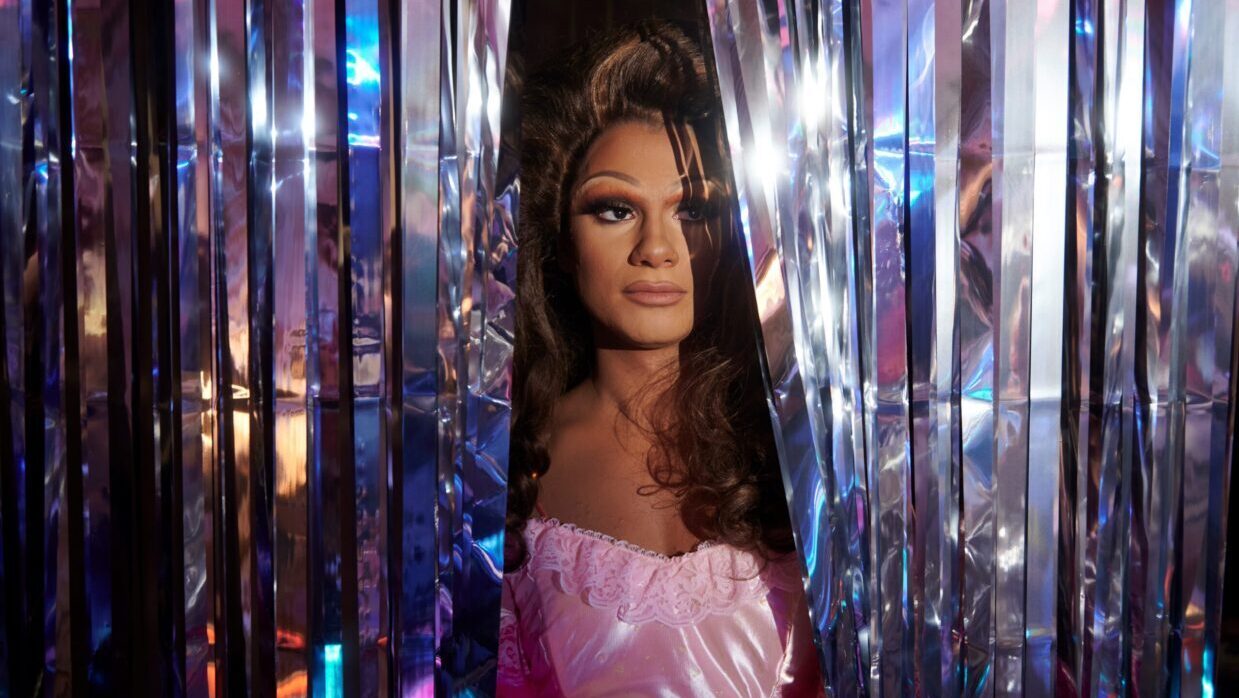 Back to selection
Back to selection
“We Imagined the Queer London of Our Dreams” | Amrou Al-Kadhi, Layla

Films are made of and from places: the locations they are filmed in, the settings they are meant to evoke, the geographies where they are imagined and worked on. What place tells its own story about your film, whether a particularly challenging location that required production ingenuity or a map reference that inspired you personally, politically or creatively?
Layla is a film of imagined space. Though set and filmed in East London, home to a vibrant queer scene and history, LGBTQ+ spaces in cities around the globe are currently victim to rapid gentrification. London is no exception. The majority of the city’s queer clubs have been eaten up in urban commodification; in making Layla, we imagined the queer London of our dreams, one beyond the scope of what is possible. In that sense, we wanted the locations and environments to embody the spirit of drag, which this film is a love letter to–it takes what it is given and dreams up new possibilities.
Aesthetically, the film is a utopic queer fairy tale of a vibrant world that exists outside the malignant graying of London’s once electric urbanity. Layla and their three best friends, all queer people of color, live in a commune that would no longer be affordable to young renters in London’s current markets. When we worked on this space with our extraordinary production designer Soraya Gillani, we talked about creating an environment that was like a queer womb–we filled the magical space with warm-hued textures and objects that made the location feel like an escape from the violence of urban streets; we opted to use objects and textures that had no recognizable images or signifiers, so that it felt like a true escape from reality–a living installation. It’s a remarkably tactile production design, one intended to be haptic for the film’s viewers–it’s an invitation of queer care and comfort.
When looking for Feathers, the queer-POC run nightclub in the movie, we had to essentially build a nightclub of our own, for no such permanent nightclub exists for queer people of color in London. Our location, the Brunel Museum, is an underground tunnel–vast, awe-inspiring–which we transformed into an Afro-Futuristic queer playground, a cosmic alternative to the commodification of London’s nightlife. We wanted to offer our audiences the queer sublime. When I walked in and saw what our production design team had created in this space, I wept. I also wept because ushering 70 drag queens in heels down a flight of steep stairs into a tunnel was terrifying–thankfully, no drag queen was injured in the filming of this movie!
The final location of the film, my favorite, was a complete set build. The culminating sequence entails Layla, an Arab drag queen, embodying both their queerness and their cultural heritage for the first time, and our team constructed a fantasy location, a kind of imagined queer mosque for Layla to release into in their mind. This location, like so many in the movie, was one of hopeful possibilities.
See all responses to our annual Sundance question here.
